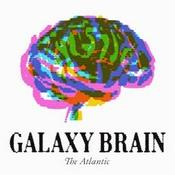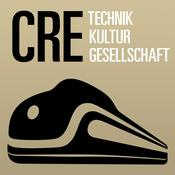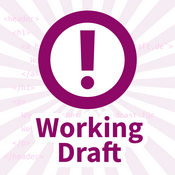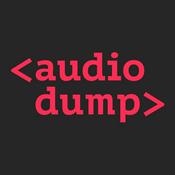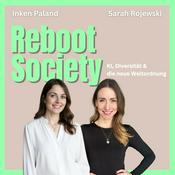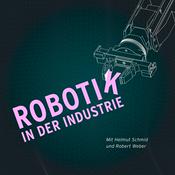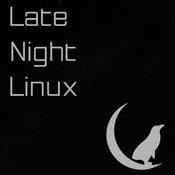Verfügbare Folgen
5 von 600
- Whats new in React 19.2 with Shruti KapoorShruti Kapoor comes back onto the podcast to discuss React 19.2, how it builds on React 19 and React 18, and new features like Activity, View Transitions, useEffectEvent, and React server components improvements powered by cacheSignal. They explore partial pre rendering, Suspense boundary batching, the stable React Compiler for auto memoed apps, and new Chrome dev tools performance tracks. The episode also covers Next.js 16 framework support and the updated ESL plugin react hooks. Links Website: https://shrutikapoor.dev LinkedIn: https://www.linkedin.com/in/shrutikapoor08/ YouTube: https://www.youtube.com/@shrutikapoor08 X: https://x.com/shrutikapoor08 Bluesky: https://bsky.app/profile/did:plc:2xjmzwgtmtxa4hqw7ofab4kb Resources React 19.2: https://react.dev/blog/2025/10/01/react-19-2 We want to hear from you! How did you find us? Did you see us on Twitter? In a newsletter? Or maybe we were recommended by a friend? Fill out our listener survey (https://t.co/oKVAEXipxu)! https://t.co/oKVAEXipxu Let us know by sending an email to our producer, Elizabeth, at [email protected] (mailto:[email protected]), or tweet at us at PodRocketPod (https://twitter.com/PodRocketpod). Check out our newsletter (https://blog.logrocket.com/the-replay-newsletter/)! https://blog.logrocket.com/the-replay-newsletter/ Follow us. Get free stickers. Follow us on Apple Podcasts, fill out this form (https://podrocket.logrocket.com/get-podrocket-stickers), and we’ll send you free PodRocket stickers! What does LogRocket do? LogRocket provides AI-first session replay and analytics that surfaces the UX and technical issues impacting user experiences. Start understanding where your users are struggling by trying it for free at LogRocket.com. Try LogRocket for free today. (https://logrocket.com/signup/?pdr) Chapters Special Guest: Shruti Kapoor.--------22:13
- The useless useCallback: React performance myths unpacked, with Dominik Dorfmeister (Repeat)In this repeat episode, Dominik Dorfmeister unpacks the pitfalls of React’s useCallback and useMemo, revealing how these hooks often introduce more complexity than performance gains. He explores the promise of the React Compiler, the practical power of the “latest ref” pattern, and strategies to boost code readability and maintainability at scale. Learn why overusing useEffect and manual memoization can do more harm than good, and how teams can level up their PR reviews and performance practices using tools like the ESLint React Compiler plugin. Links Bluesky: https://bsky.app/profile/tkdodo.eu Github: https://github.com/tkdodo X: https://x.com/TkDodo Resources The Useless useCallback: https://tkdodo.eu/blog/the-useless-use-callback Chapters 00:00 Why talk about useCallback and useMemo 00:40 Are useCallback and useMemo actually useless? 02:00 When (if ever) memoization is worth it 07:30 Pitfalls of overusing memoization in PRs and team guidelines 12:10 Latest ref pattern as an alternative 18:40 React Compiler and ESLint support 23:30 Why self-reviews help catch unnecessary memoization 28:10 Do React docs encourage over-optimization? 33:00 Advice for React developers We want to hear from you! How did you find us? Did you see us on Twitter? In a newsletter? Or maybe we were recommended by a friend? Fill out our listener survey (https://t.co/oKVAEXipxu)! Let us know by sending an email to our producer, Elizabeth, at [email protected] (mailto:[email protected]), or tweet at us at PodRocketPod (https://twitter.com/PodRocketpod). Follow us. Get free stickers. Follow us on Apple Podcasts, fill out this form (https://podrocket.logrocket.com/get-podrocket-stickers), and we’ll send you free PodRocket stickers! What does LogRocket do? LogRocket provides AI-first session replay and analytics that surfaces the UX and technical issues impacting user experiences. Start understanding where your users are struggling by trying it for free at LogRocket.com. Try LogRocket for free today. (https://logrocket.com/signup/?pdr) Special Guest: Dominik Dorfmeister.--------22:55
- First look at Prisma ORM v7 with Will MaddenJack Herrington talks with Will Madden about how Prisma ORM is evolving in v7, including the transition away from Rust toward TypeScript, less magic, and a new Prisma config file for more predictable good DX. They dig into Prisma Postgres, improvements to Prisma Studio, better support for serverless environments, and how JavaScript ORM tools like Prisma as an object relational mapper will fit into future agentic coding workflows powered by LLMs. Links LinkedIn: https://www.linkedin.com/in/willmadden Resources X thread with highlights: https://x.com/prisma/status/1991155390080598366 Blog post: https://www.prisma.io/blog/announcing-prisma-orm-7-0-0 YouTube video: https://www.youtube.com/watch?v=AmIXJHL-sBU Refreshed website homepage: https://www.prisma.io Docs with new getting started guide: https://www.prisma.io/docs ORM: https://www.prisma.io/blog/orm-6-12-0-esm-compatible-generator-in-preview-and-new-options-for-prisma-config https://www.prisma.io/blog/why-prisma-orm-generates-code-into-node-modules-and-why-it-ll-change https://www.prisma.io/blog/from-rust-to-typescript-a-new-chapter-for-prisma-orm https://www.prisma.io/blog/try-the-new-rust-free-version-of-prisma-orm-early-access https://www.prisma.io/blog/rust-free-prisma-orm-is-ready-for-production Prisma Postgres: prisma.io/postgres We want to hear from you! How did you find us? Did you see us on Twitter? In a newsletter? Or maybe we were recommended by a friend? Fill out our listener survey (https://t.co/oKVAEXipxu)! https://t.co/oKVAEXipxu Let us know by sending an email to our producer, Elizabeth, at [email protected] (mailto:[email protected]), or tweet at us at PodRocketPod (https://twitter.com/PodRocketpod). Check out our newsletter (https://blog.logrocket.com/the-replay-newsletter/)! https://blog.logrocket.com/the-replay-newsletter/ Follow us. Get free stickers. Follow us on Apple Podcasts, fill out this form (https://podrocket.logrocket.com/get-podrocket-stickers), and we’ll send you free PodRocket stickers! What does LogRocket do? LogRocket provides AI-first session replay and analytics that surfaces the UX and technical issues impacting user experiences. Start understanding where your users are struggling by trying it for free at LogRocket.com. Try LogRocket for free today. (https://logrocket.com/signup/?pdr) Chapters--------23:50
- GitHub’s Octoverse: TypeScript, Copilot, and Open Source StrugglesIn this episode of PodRocket, Jack and Paige dive into the latest GitHub Octoverse report, covering trends like shipping faster with AI, the dominance of TypeScript as the top language, the rise of AI-generated pull requests, and the concerning drop in code review comments. They unpack the growing role of Copilot, the tension between OSS contributions and burnout, and the surge in AI infrastructure projects like Ollama. The discussion also touches on open source governance, the docs gap, prompt injection risks, and whether AI-powered browsers can succeed beyond the dev crowd. Links Resources Octoverse: A new developer joins GitHub every second as AI leads TypeScript to #1: https://github.blog/news-insights/octoverse/octoverse-a-new-developer-joins-github-every-second-as-ai-leads-typescript-to-1 We want to hear from you! How did you find us? Did you see us on Twitter? In a newsletter? Or maybe we were recommended by a friend? Fill out our listener survey (https://t.co/oKVAEXipxu)! https://t.co/oKVAEXipxu Let us know by sending an email to our producer, Elizabeth, at [email protected] (mailto:[email protected]), or tweet at us at PodRocketPod (https://twitter.com/PodRocketpod). Check out our newsletter (https://blog.logrocket.com/the-replay-newsletter/)! https://blog.logrocket.com/the-replay-newsletter/ Follow us. Get free stickers. Follow us on Apple Podcasts, fill out this form (https://podrocket.logrocket.com/get-podrocket-stickers), and we’ll send you free PodRocket stickers! What does LogRocket do? LogRocket provides AI-first session replay and analytics that surfaces the UX and technical issues impacting user experiences. Start understanding where your users are struggling by trying it for free at LogRocket.com. Try LogRocket for free today. (https://logrocket.com/signup/?pdr) Chapters 01:15 – What is GitHub’s Octoverse Report? 02:15 – Shipping Faster with AI 03:45 – Copilot’s Impact on Code Quality 05:15 – TypeScript Takes the Lead 06:30 – Concerns About AI PR Volume 07:45 – Decline in Code Reviews 09:15 – OSS Maintenance Crisis 11:00 – GitHub Copilot and Funding OSS 12:30 – Where AI Actually Helps Devs 14:00 – Small Models and Running Locally 16:00 – TypeScript vs Python: Stack Implications 18:30 – Language Trends and AI Consolidation 21:00 – Framework and Stack Fragility in AI Era 24:00 – Docs Gap in OSS Projects 26:30 – Open Source Governance and Security Gaps 30:00 – AI Infrastructure Projects Leading GitHub 33:00 – Will AI Browsers Catch On? 35:00 – Prompt Injection and Security Risks 37:00 – Opportunity in OSS Documentation 39:30 – Final Thoughts and Hot Takes Special Guest: Jack Herrington.--------49:06
- Speeding up the web with the speculation rules API | Barry PollardBarry Pollard from the Chrome devrel team joins PodRocket to discuss the speculation rules API, a new browser feature designed to improve web performance through prefetch and pre-render techniques. Barry breaks down the history of speculative loading, contrasts SPA vs MPA behavior, and explains the nuances of hover prefetching, conservative prefetch, and the powerful new pre-render until script mode. Learn how Shopify and WordPress are adopting the API, what telemetry from Chrome Status reveals, and what developers need to know about potential pitfalls, caching behavior, and how the API is becoming a standard for static sites and e-commerce performance. Links Website: https://www.tunetheweb.com X: https://x.com/tunetheweb LinkedIn: https://www.linkedin.com/in/tunetheweb Github: https://github.com/tunetheweb Bluesky: https://bsky.app/profile/tunetheweb.com Resources Perfnow: https://perfnow.nl/speakers.html#barry We want to hear from you! How did you find us? Did you see us on Twitter? In a newsletter? Or maybe we were recommended by a friend? Fill out our listener survey (https://t.co/oKVAEXipxu)! https://t.co/oKVAEXipxu Let us know by sending an email to our producer, Elizabeth, at [email protected] (mailto:[email protected]), or tweet at us at PodRocketPod (https://twitter.com/PodRocketpod). Check out our newsletter (https://blog.logrocket.com/the-replay-newsletter/)! https://blog.logrocket.com/the-replay-newsletter/ Follow us. Get free stickers. Follow us on Apple Podcasts, fill out this form (https://podrocket.logrocket.com/get-podrocket-stickers), and we’ll send you free PodRocket stickers! What does LogRocket do? LogRocket provides AI-first session replay and analytics that surfaces the UX and technical issues impacting user experiences. Start understanding where your users are struggling by trying it for free at LogRocket.com. Try LogRocket for free today. (https://logrocket.com/signup/?pdr) Chapters--------44:33
Weitere Technologie Podcasts
Trending Technologie Podcasts
Über PodRocket
PodRocket covers everything you need to know about frontend web development on a weekly basis. Join our hosts as they interview experienced developers about all the libraries, frameworks, and tech industry issues they deal with every day.
Podcast-WebsiteHöre PodRocket, KREWKAST und viele andere Podcasts aus aller Welt mit der radio.de-App
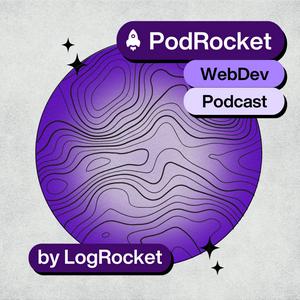
Hol dir die kostenlose radio.de App
- Sender und Podcasts favorisieren
- Streamen via Wifi oder Bluetooth
- Unterstützt Carplay & Android Auto
- viele weitere App Funktionen
Hol dir die kostenlose radio.de App
- Sender und Podcasts favorisieren
- Streamen via Wifi oder Bluetooth
- Unterstützt Carplay & Android Auto
- viele weitere App Funktionen


PodRocket
Code scannen,
App laden,
loshören.
App laden,
loshören.










